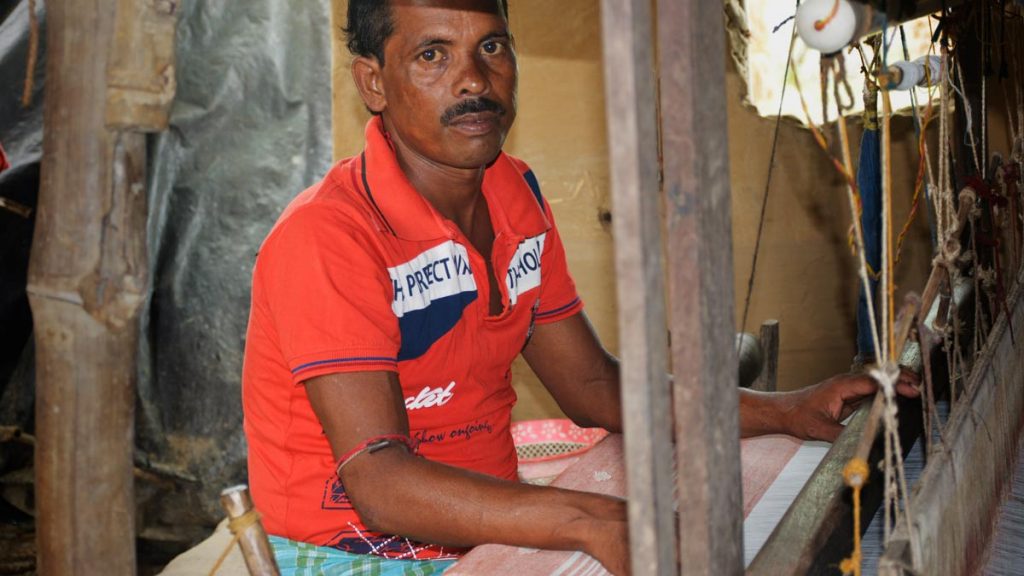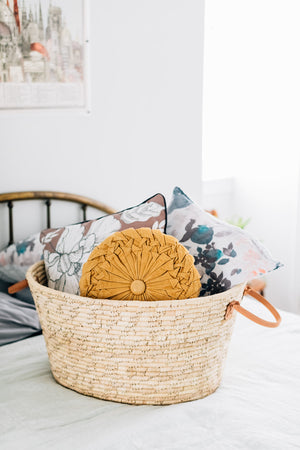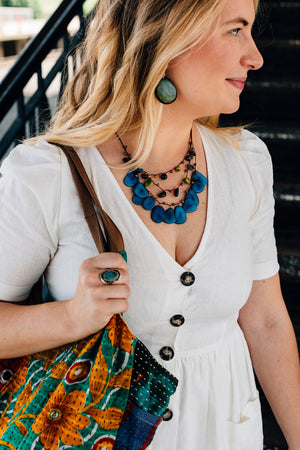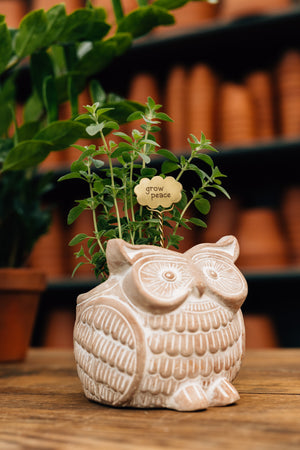
What is Jamdani Weaving?

There are master textile weavers, capable of the most intricate weaving imaginable on the Indian subcontinent. Jamdani weaving, originating in the undivided Bengal region between the 9th-12th centuries is the most time-consuming and labor-intensive form of hand-loom weaving in existence. Traditionally known for its rich floral motifs, Jamdani is a discontinuous weft technique of weaving done on a loom wherein the motifs are inlaid in the fabric by adding a denser thread to fine warp threads by hand. As you can imagine, this process takes an exorbitant amount of time and care, reserved only for master weavers.
Originally used to create what was known as Dhaka muslin, the finest textile with the highest thread count coming out of modern-day Bangladesh, today Jamdani weaving is most famous for its production of intricate saris. However, it can also be used to produce scarves and handkerchiefs in fine muslin.
Ten Thousand Villages has two such scarves available from our fair trade partners, Craft Resource Center (CRC) Exports in India.
Jamdani Weavers at CRC Exports
CRC Exports was founded in 1990 in response to the eroding artistic producer culture in India due to the industrialization of the textile industry and the mechanical mass production of cheap textiles worldwide. Following agriculture, the textile industry is the largest employing industry in India and the heritage crafts that live there deserve preservation. In addition to craft preservation, CRC Exports exists to ensure artisans uphold sustainable and eco-friendly production habits and have access to fair and equal employment. They stand firm on the belief that with access to living wages, comes access to basic rights like health care and education.

Jamdani Weaving: Heritage and History
The plants once used to source fine filament cotton for Dhaka muslin were lost by the 19th century after the East India Trading Company put a stranglehold on muslin producers by demanding they produce more for less profit. With no one to tend the plants, they retreated into obscurity. Ultimately, under British colonialism, the Bengali Jamdani and muslin industries rapidly declined due to colonial import policies that favored industrially manufactured textiles. The technique of Jamdani weaving nearly went extinct as weavers abandoned their craft in favor of farming or cheaper production methods to keep up with demand. Yet, fortunately, Jamdani weaving remains an intangible piece of Bengali and Indian heritage.
In 2013 the United Nations Educational, Scientific and Cultural Organization (UNESCO) inscribed Jamdani weaving on the Representative List of the Intangible Cultural Heritage of Humanity, recognizing its long history and relevance to Bengali culture, and even worldwide history, as Dhaka muslin was sought after by royal families the world over for several centuries and it is therefore prevalent in many cultures.
If Jamdani is to continue to survive as a heritage craft, organizations like CRC Exports who are working to uphold producer assistance and cut out exploitative middlemen in the exports process must perpetuate. Also, consumers must be able to appreciate the difference between mechanically produced cotton textiles and the works of art that hand-loom weaving produces.
Traditionally, the motifs in a Jamdani textile would not be drawn on paper to be followed in the loom, but would be designed from memory and artistic creativity—an impressive feat considering how mathematical and symmetrical the traditional motifs are. Today, as Jamdani has evolved to meet current fashion demands, modern motifs may be drawn on graph paper, but when traditional motifs are utilized, they continue to come from the weaver’s memory as it was passed down generationally.

Modern Day Jamdani Weaving
Fashion designers with textile knowledge or Bengali/Indian heritage have the unique privilege of reintroducing fashion markets to the intricate craft of Jamdani weaving. To read more on the heritage and craft of Jamdani, check out Vogue’s 2019 interview with designer Gaurang Shah and BBC’s piece on Islam, the man attempting to resurrect the plants necessary to reproduce Dhaka muslin.








Leave a comment